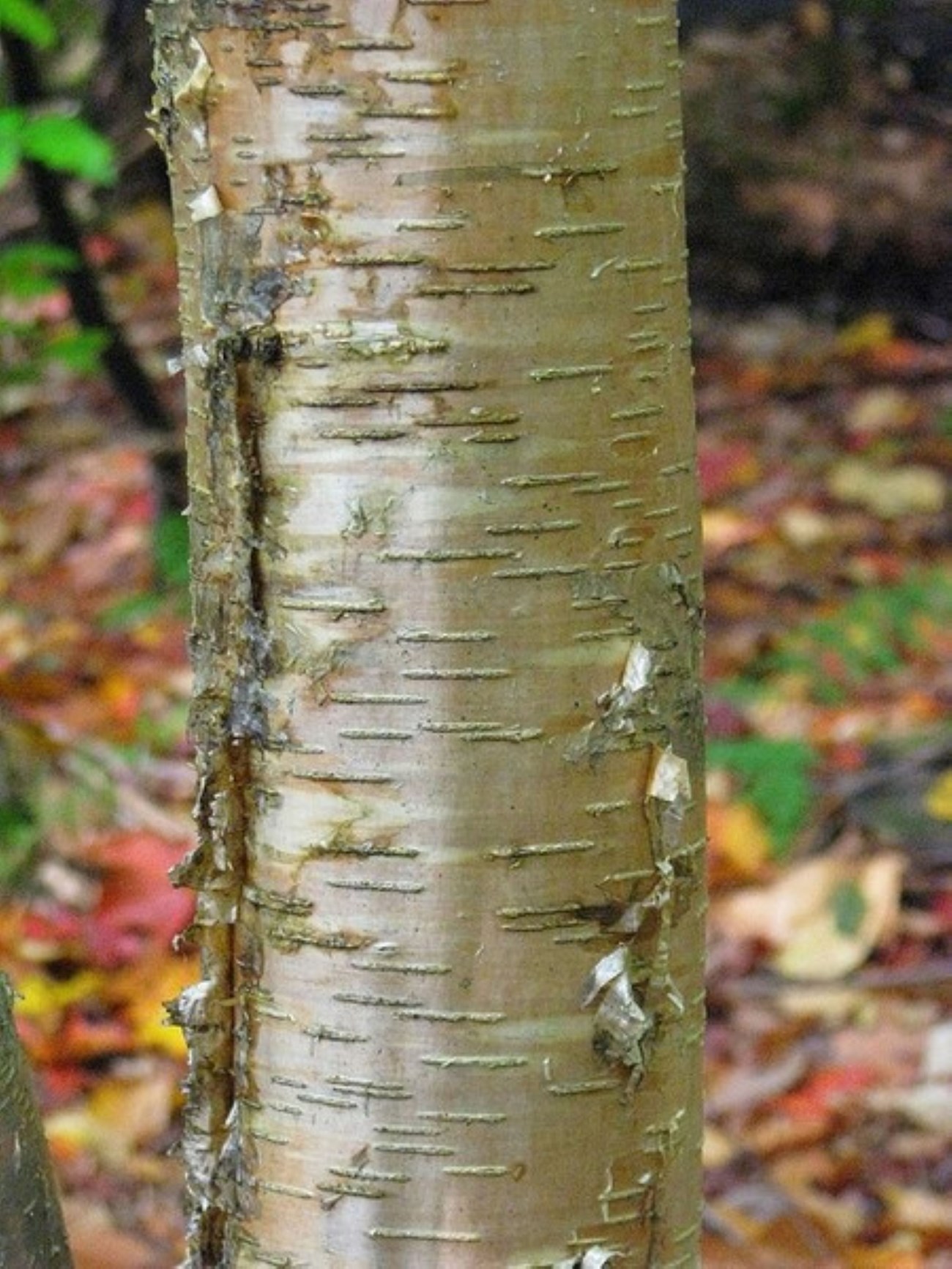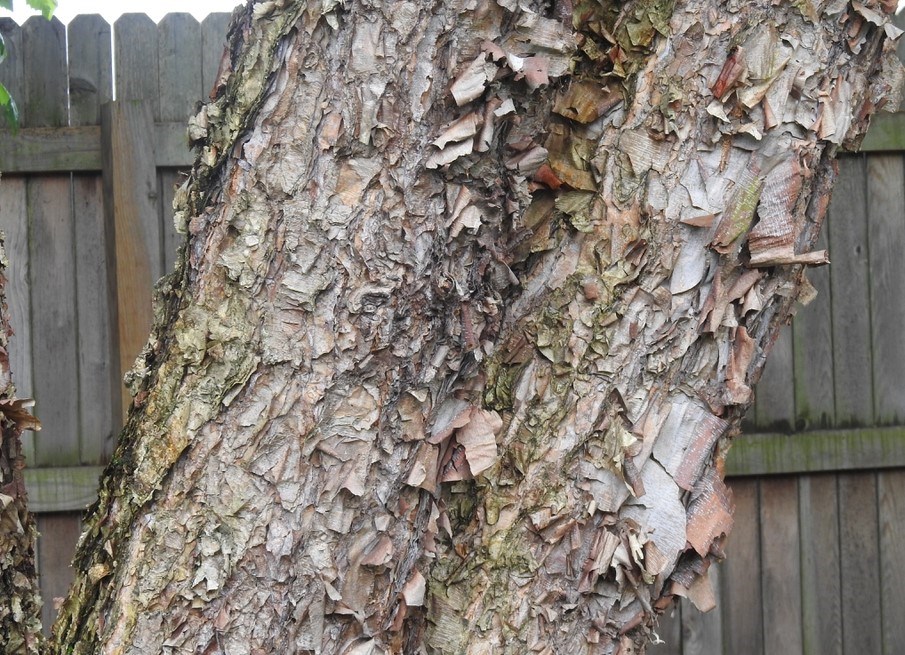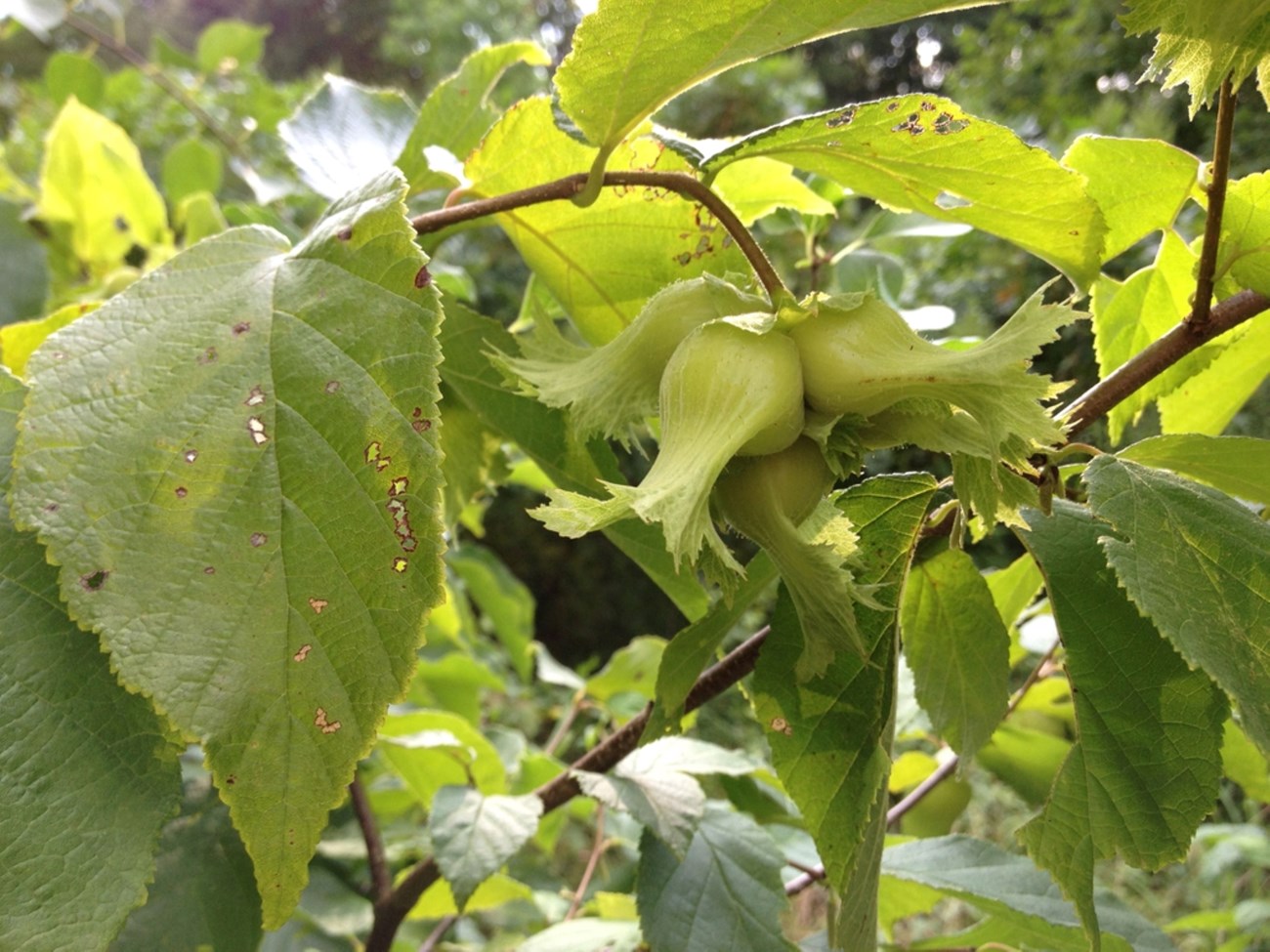Last updated: August 27, 2024
Article
Birch Family Natives of the National Capital Region
There’s more to know about the nine native birches of the National Capital Region (NCR) than white bark and lightweight canoes. Most trees and shrubs of the Birch family (Betulaceae) are native to subarctic and cold temperate regions of the Northern Hemisphere. The family contains six genera and approximately 150 species worldwide. Seventeen of those species are native to the eastern US.

NCSU/ El Grafi CC BY-SA 3.0
Birches bear male and female flowers on the same plant. The male catkins are elongate, round in cross-section, and pendulous when flowering. In winter and early spring, they hang conspicuously from twigs near the ends of branches. Pollen is carried by wind from male catkins to smaller and variously shaped female flowers. After pollination, flowers develop into fruits borne as nuts (Corylus), nutlets (Carpinus and Ostrya), or tiny samaras (Betula and Alnus). The nuts and seeds are an important food source for birds and small mammals.
The wood, bark, and nuts of birches have many commercial uses. Most American-made toothpicks are from birch wood for example. Birch oil is used for flavoring. Hazelnuts are made into nut butters and various food products. The shock resistant woods of hop hornbeam and ironwood are used for tool handles, mallets, and golf club heads.
The Nine “Birches” of the NCR
Yellow Birch
(Betula alleghaniensis) is a tree of the mountains in our region. They grow at Catoctin Mountain Park (CATO) along streams and at high elevations. Bronzy-yellow bark peels away in thin flaky strips while twigs and inner bark have a faint taste and smell of wintergreen. The wood of yellow birch is used for cabinetry, flooring and toothpicks. Due to a preference for cool climates, yellow birch is likely to suffer a shrinking range as a result of climate change. Monitoring this tree could be a good way to gauge impacts of climate change in our region.

NCSU/ Kerry Woods CC BY-NC-ND 4.0
Black Birch
(Betula lenta), is a tree most plentiful in the mountains, uncommon in the Piedmont, and absent from the Coastal Plain. The dark bark resembles cherry bark. Birch oil (Methyl salicylate) is distilled from the inner bark and twigs. Wintergreen (Gaultheria procumbens) also produces this oil which is called wintergreen oil when extracted from the plant. Black birch is the original source of flavoring for birch beer. The oil is also used for flavoring candy. In spring, black birch can be tapped to make birch syrup, a sweetener similar to maple syrup.

NCSU/ Katja Schulz CC BY 2.0
Gray Birch
(Betula populifolia), native to the Northeast U.S. and Canada, occurs at the southern edge of its range in the NCR and so is extremely rare here. Gray birch are known from sites along the fall-line in the upper Anacostia River watershed but not known from any NCR park. The Baltimore-Washington Parkway and Greenbelt Park have the most suitable habitat for this birch. Gray Birch is a pioneer tree usually found along forest edges, in burned areas, and other disturbed open ground in sandy or gravelly soils. The bark color is grayish-white.

Purdue Arboretum
River Birch
(Betula nigra) is the most common birch in our region. This multi-trunked tree is locally abundant along the banks of the Potomac River but can be found along the banks of smaller streams too. They prefer to grow in floodplain habitats leaning out over water. The small branches are graceful and pendulous. The attractive chalky white to tan colored bark peels away from the trunk and branches. The old bark eventually becomes dark gray and scaly. River birch is a popular landscaping tree.

NCSU/ Kathleen Moore CC BY 2.0
Smooth Alder
(Alnus serrulata) is a shrub always found near water. Favorite habitats are stream banks and swamps. Smooth alder is widely distributed in our region but uncommon. Like other alders they maintain a symbiotic relationship with nitrogen-fixing bacteria. The alder gets nitrogen from the bacteria via root nodules and in exchange provides the bacteria with carbon. Alder thickets in wetlands provide nesting habitats for birds. The seeds of smooth alder are eaten by many bird species.

NCSU/ Aroche CC BY-SA 3.0
Ironwood
(Carpinus caroliniana), also called American hornbeam, blue beech, or musclewood, is a common understory tree of moist slopes and bottomlands. It has a distinctive smooth, gray, fluted trunk and branches. Most trees lean gracefully and are well branched. Like many members of the birch family they have fine twigs. The wood is very hard and durable.

NCSU/ Cathy Dewitt CC BY 4.0
American Hazelnut
(Corylus americana) is a multi-stemmed shrub usually growing in rich moist soils. It is widely distributed across the region but is uncommon. American Hazelnut is one of the earliest woody plants to flower, sometimes blooming in late winter. The male catkins are conspicuous when blooming. They grow up to four inches long when releasing pollen. The tiny female flowers are a bright magenta and measure less than two millimeters. Look thru a hand lens to appreciate their beauty. By late summer the shrubs bear edible nuts housed in a leafy husk that are relished by wildlife. Your chances of finding some for yourself are not so good.

NCSU/ Fritz Flohr Reynolds CC-BY-SA 2.0
Beaked Hazelnut
(Corylus cornuta) is similar to American Hazelnut in growth habit. The husk around the nut is tapered to resemble a beak. Beaked Hazelnuts are rare in our region. They too bear edible nuts favored by wildlife. They grow in various habitats ranging from dry rocky woods to seepage swamps. In the NCR they are known only from CATO and Harpers Ferry National Historical Park (HAFE).

NCSU/ Maddie B. CC BY-NC 4.0
Hop Hornbeam
(Ostrya virginiana), also called ironwood, is an uncommon small understory tree of rocky ground in the Piedmont and Mountains. The bark of mature trees is more or less shaggy and flakes away from the trunk in short vertical strips. This feature contrasts with the smooth cherry-like bark of young branches. Hop Hornbeam has very hard durable wood.

University of Minnesota
Other Birch Family Members of the Mid-Atlantic Region
Speckled Alder (Alnus rugosa) and Paper Birch (Betula papyrifera) are the only Birch Family members native to the Potomac River watershed not found in the NCR. Although unlikely, it is possible to find Speckled Alder in our region at CATO or in the westernmost portions of C&O Canal National Historical Park (CHOH).

NCSU/ James CC BY 2.0
It is highly unlikely that paper birch grows in our region. Both species grow at high elevations in the Appalachian Plateau Province west of our region. Seaside Alder (Alnus maritima) is found on Maryland’s Eastern Shore and Green Alder (Alnus viridis) occurs to our north in south-central Pennsylvania.
CATO = Catoctin Mountain Park
CHOH = Chesapeake and Ohio Canal National Historical Park
GWMP = George Washington Memorial Parkway
HAFE = Harpers Ferry National Historical Park
MANA = Manassas National Battlefield Park
MONO = Monocacy National Battlefield
NACE = National Capital Parks - East
PRWI = Prince William Forest Park
ROCR = Rock Creek Park
WOTR = Wolf Trap National Park for the Performing Arts
More on Birches
The NCR Network’s Inventory & Monitoring program (NCRN I&M) monitors trees like birches as part of a larger forest vegetation monitoring effort. To learn more about this monitoring, visit the NCRN I&M vegetation monitoring page to view the latest reports and resource briefs.
This content was originally published in 2011, and was republished in an online format in 2024.
Tags
- antietam national battlefield
- catoctin mountain park
- chesapeake & ohio canal national historical park
- george washington memorial parkway
- harpers ferry national historical park
- manassas national battlefield park
- monocacy national battlefield
- national capital parks-east
- prince william forest park
- rock creek park
- wolf trap national park for the performing arts
- nature
- ncrn
- ncrn im
- birch
- trees
- forests
- betulaceae
- dc
- virginia
- maryland
- west virginia
- im
- forest
